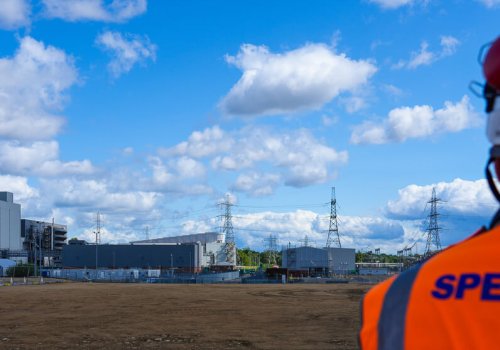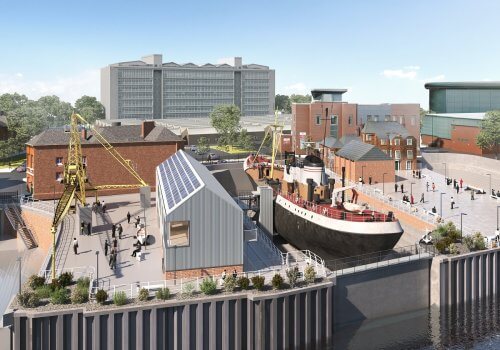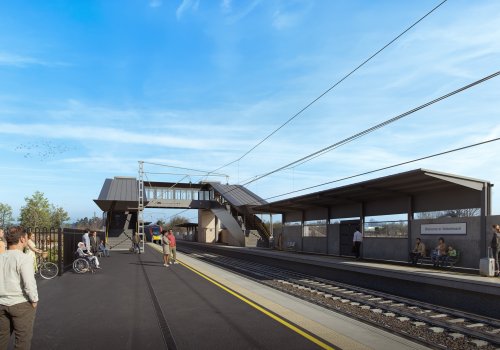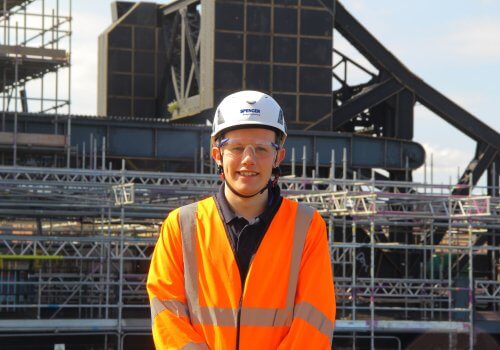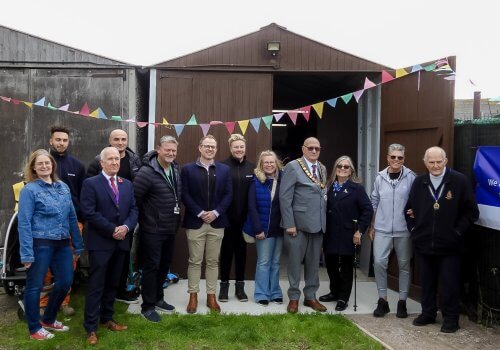Spencer Rail has completed one of the most challenging aspects of its work on Phase 2 of the East Kent Resignalling project.
An 800 tonne pedestrian subway, which will form part of the new station at Rochester, was built off line and adjacent to the existing rail embankment. It was then installed during a 96-hour blockade over the Easter period.
The reinforced concrete subway, which is 28m long, 7.6m wide and 4.0m high, was slid 36 metres into place after Spencer Rail had excavated through the embankment the previous day.
The team used ten jacks to life the structure off the ground by 100mm. Each jack was bolted to a compressed nitrogen pad, which ran along a steel skidway, with each pad then being pressurised with nitrogen gas.
The pads then acted like a ‘mini-hovercraft’, riding on a cushion of nitrogen along the skidway. This resulted in a greatly reduced friction between the subway and the skidway, meaning that a pushing force of only 8 tonnes was required to slide the structure into place.
Tom Kerins, operations director at Spencer Rail, said: “Installing the subway was an extremely important and challenging aspect of the works at Rochester and it is testament to the expertise, forward-thinking and hard work of our team that we have completed the installation successfully.
“Moving such a large structure into place presented us with a number of logistical challenges but, by using innovative technology, it was completed without incident and ahead of schedule. It was the first subway slide of this type carried out in the UK using this technology.”
“It was fantastic to see so much hard work over the last few months come together. This is the first key milestone achieved for the construction of the new station at Rochester and remaining works.”
The successfully installation means works to upgrade the 33-mile stretch of East Kent’s railway network are on track to be completed by spring 2016.
Once completed, the £145m East Kent Resignalling Phase 2 project will have replaced old signalling equipment and increased capacity and capability along the region’s rail network.
It will also have delivered operational savings within the project area and improved network integration with other modes of transport, a highlight being the installation of the new subway at Rochester.
Old signal boxes were abolished under the Phase 1 Contract at Faversham, Margate, Ramsgate, Canterbury East and Shepherdswell.
The phase 2 project comprises the total renewal of life-expired signalling on a section of the Chatham Main Line between the end of the Phase 1 project near Sittingbourne, and the Victoria Signalling Centre control area near Longfield, alongside the re-control and partial renewal or modification of existing signalling on connecting routes.
Key components of the East Kent Resignalling Phase 2 project include:
- The creation of a new ‘Access for all’, three platform station at Rochester, including pedestrian subway and the decommissioning of the old station
- Platform extensions and a new turn-back facility at Rainham in the form of a new 12-car bay platform
- New platforms and extensions to existing platforms at Strood to accommodate 12-car trains
- The total renewal of life-expired signalling between Longfield and Sittingbourne, transferring the control of the signalling to the East Kent Signalling Centre (EKSC) – Gillingham
- The re-control of Strood from Ashford, Sheerness Branch and Medway Valley line to EKSC.
- The renewal of life-expired signalling at Maidstone East
Spencer Rail is working with Atkins and Balfour Beatty, Medway Council, Southeastern Railway and Network Rail to deliver the project, which is due to be completed by April, 2016.
Over the next two years, Spencer Rail will also be extending the platforms at numerous stations, increasing their capacity from six to 12-car trains, building a new station at Rochester and decommissioning eight new signalling boxes throughout the East Kent region once the new signalling system has been installed.

